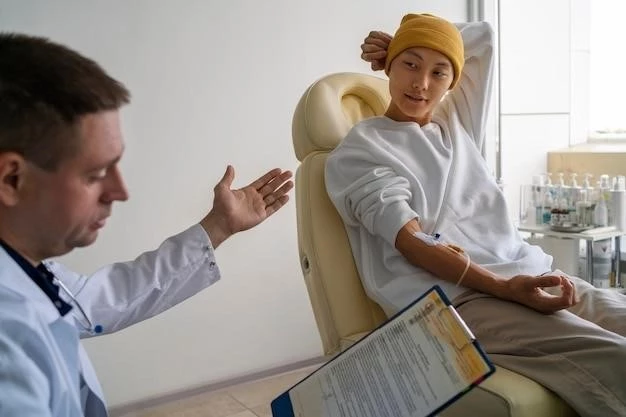Introduction to Myasthenia Gravis
Myasthenia gravis, an autoimmune disease, involves autoantibodies against nicotinic acetylcholine receptors, affecting muscle cell contraction signaling.
Definition and Characteristics
Myasthenia gravis is a chronic autoimmune disease affecting nerve-muscle communication. It leads to muscle weakness, particularly in voluntary muscles. The condition results from antibodies targeting acetylcholine receptors, disrupting neuromuscular function. Common symptoms include fatigue, difficulty with eye movements, facial expressions, and swallowing. Diagnosis involves evaluating symptoms and specific tests to confirm antibody presence. Treatment aims to manage symptoms and improve muscle function. It’s crucial for individuals with myasthenia gravis to receive proper medical care and support.

Causes and Risk Factors
Myasthenia gravis is primarily caused by autoantibodies targeting nicotinic acetylcholine receptors. Risk factors may include genetic predisposition, autoimmune reactions, and certain infections triggering the immune response.
Autoimmune Nature of Myasthenia Gravis
Myasthenia gravis is an autoimmune disease where the immune system mistakenly attacks acetylcholine receptors on muscle cells, disrupting nerve signals essential for muscle contractions. This autoimmune response leads to muscle weakness and fatigue, primarily affecting voluntary muscles. Understanding the role of autoantibodies in targeting these receptors is crucial in managing the condition.

Symptoms and Clinical Presentation
Myasthenia gravis manifests with muscle weakness, often affecting eye movements, facial expressions, swallowing, and limb movements. Symptoms may worsen with activity or improve with rest, leading to fatigue.
Common Signs of Myasthenia Gravis
Signs of myasthenia gravis include muscle weakness, especially in the eyes, face, and throat, leading to symptoms such as drooping eyelids, double vision, difficulty swallowing, and slurred speech. Fatigue and worsening symptoms with activity are also common.
Diagnosis and Testing
Diagnosing myasthenia gravis involves assessing symptoms, conducting neurological exams, and specific tests like the Tensilon test or antibody testing to confirm the condition. Monitoring muscle function and nerve-muscle communication are critical in the diagnostic process.
Key Methods for Diagnosing Myasthenia Gravis
Diagnosing myasthenia gravis involves a thorough evaluation of symptoms, including muscle weakness in specific muscle groups. Key methods include the Tensilon test, antibody testing to detect specific autoantibodies, electromyography (EMG) to assess nerve function, and imaging studies such as CT scans to evaluate the thymus, which can be involved in the autoimmune process.
Treatment Approaches
Managing myasthenia gravis involves various treatment approaches to alleviate symptoms and improve muscle strength. Options may include medications, thymectomy surgery, plasmapheresis, and lifestyle modifications to enhance quality of life.
Management Strategies for Myasthenia Gravis
Management of myasthenia gravis involves a multidisciplinary approach including medications to enhance neuromuscular transmission, immunosuppressive therapy to control autoimmune responses, thymectomy in certain cases, and supportive care to address symptom fluctuations. Educating patients on self-care practices and monitoring for potential complications are vital components of effective disease management.
Impact on Daily Life
Living with myasthenia gravis can significantly impact daily activities due to muscle weakness in crucial areas like eye movements, swallowing, and limb functions. Managing symptoms and adapting to limitations are essential for maintaining quality of life.
Challenges Faced by Individuals with Myasthenia Gravis
Living with myasthenia gravis presents challenges such as muscle weakness impacting daily tasks, difficulty with speech and swallowing, potential respiratory issues, and the need for ongoing medical management. Coping with fluctuating symptoms and the impact on quality of life can be emotionally and physically demanding.
Prognosis and Complications
Understanding the prognosis of myasthenia gravis involves recognizing potential long-term effects such as respiratory complications, myasthenic crises, and the impact on overall quality of life. Early diagnosis and appropriate management are crucial in mitigating potential complications and improving prognosis.
Potential Long-Term Effects of Myasthenia Gravis
Long-term effects of myasthenia gravis can lead to complications such as respiratory problems, myasthenic crises, muscle weakness affecting daily activities, and the need for ongoing management to prevent symptom exacerbation. Recognizing these potential long-term effects is crucial for comprehensive care and improving outcomes for individuals with the condition.
Ongoing Research and Developments
Continuous research into myasthenia gravis focuses on enhancing understanding of the autoimmune mechanisms involved, exploring novel treatment options, and investigating potential interventions targeting the disease’s progression. Stay updated on advancements in myasthenia gravis research for improved management outcomes.
Advancements in Understanding Myasthenia Gravis
Research into myasthenia gravis has advanced our understanding of the autoimmune mechanisms that underlie the disease, focusing on identifying specific antibodies targeting acetylcholine receptors. New insights allow for the development of targeted treatments and management strategies to alleviate symptoms and improve patients’ quality of life.
Support and Resources
Accessing support and resources is crucial for individuals with myasthenia gravis to manage the condition effectively. Organizations and services dedicated to aiding patients in understanding and coping with the challenges presented by the disease can provide valuable assistance and guidance.
Organizations and Services for Myasthenia Gravis Patients
Receiving support and guidance is essential for individuals with myasthenia gravis. Organizations and services dedicated to assisting patients offer resources for managing the condition, connecting with healthcare professionals, accessing treatment options, and finding community support to navigate the challenges associated with the disease.
